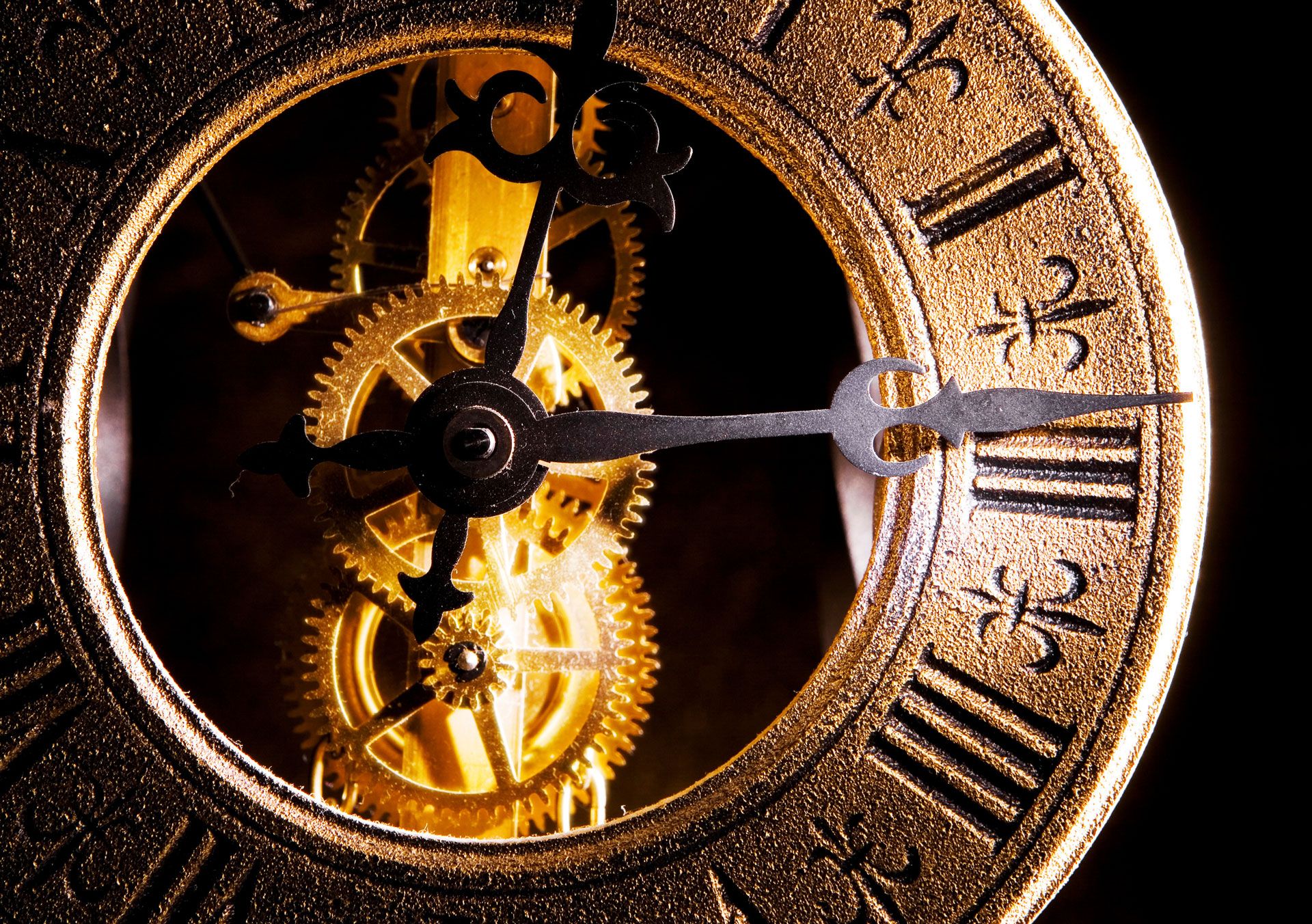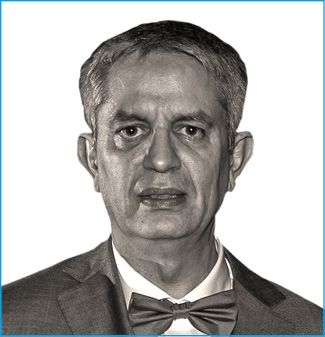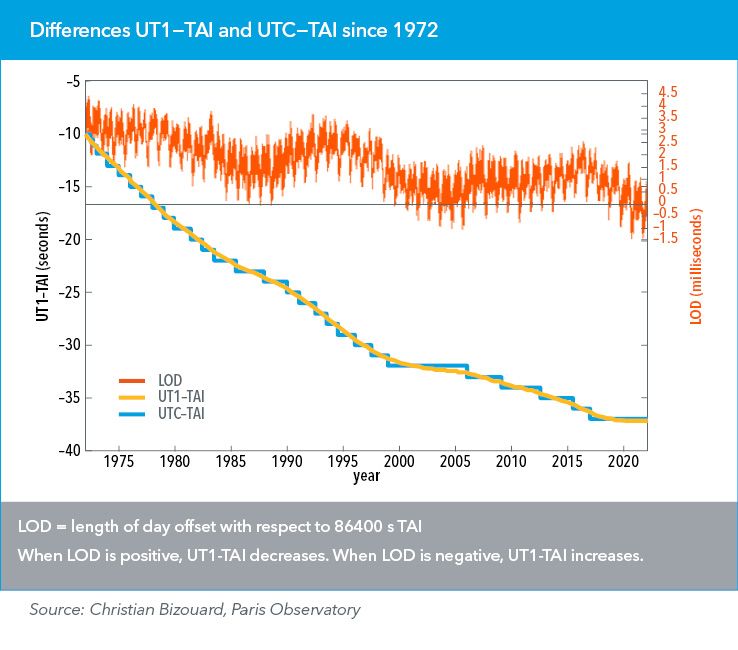
Dissemination of time: A historical perspective


Christian Bizouard, Astronomer, Paris Observatory (SYRTE) and IERS Earth Orientation Centre
The dissemination of time based on the Earth’s rotation, determined by the mean solar time (t) of a reference meridian, is an ancient practice that has evolved with the advancement of technologies and their applications.
As early as in the 18th Century, time dissemination was achieved through mechanical clocks, which enabled mobile timekeeping over long distances, especially at sea.
These facilitated the computation of prime-meridian rotation with respect to Greenwich Sidereal Time (GST). A celestial object’s right ascension (α) in the local meridian could then determine longitude of the local meridian [α – GST (t)], allowing increasingly accurate navigation and maps.
In the 19th Century, time dissemination became crucial for railway timetables. Growing international commerce and communications led to the adoption in 1884 of the Greenwich mean solar time as Universal Time (UT). Still, manmade clocks were not stable enough to be synchronized with the Earth’s rotation time, and they had to be adjusted to UT through astronomical observations every few days.
In the early 20th Century, different radio services around the world began broadcasting in local time zones in relation to UT. In 1912, the International Time Bureau (BIH — Bureau international de l’heure) at the Paris Observatory began collecting data to maintain UT.
The irregularity of Universal Time
The invention of the quartz clock changed the game in the 1930s, revealing UT’s irregularity, with a seasonal variation of about 20 milliseconds (ms). Planetary ephemeris comparisons confirmed further oscillations of up to five seconds in UT over multi-decade periods.
Based on ancient solar eclipse records, the length of a day increases over the long term at the rate of 1.8 milliseconds per calendar year (ms/cy), causing a parabolic decrease in UT as recorded over significant periods.
By the 1950s, the quartz oscillator could be coupled to an atomic resonator for enhanced timekeeping stability. The resulting evidence of instability in the Earth’s rotation led to a distinction between traditional astronomical time (UT1) and the more stable UT determined by atomic clocks. International Atomic Time (TAI) was adopted for scientific purposes in 1958. Thirteen years later, the TAI second became the widely accepted time standard for all human activity.
Aligning atomic time with UT1
In 1972, Coordinated Universal Time (UTC) became the widely accepted basis for international timekeeping. UTC is stable like TAI, except it is sometimes shifted by one second to match astronomical reality, or to remain within 0.9 seconds of UT1.
Unadjusted TAI, by contrast, has crept ahead of UT1 by some 27 seconds since 1972. UTC thus maintains an ongoing compromise between the stability of atomic timekeeping and the reality of Earth’s days and nights.
In 1987, BIH’s astronomical activities became part of the International Earth Rotation Service (IERS), now the International Earth Rotation and Reference Systems Service.
The decision to introduce a one-second shift in UTC requires astronomical monitoring of UT1 with respect to UTC. Nowadays the IERS Earth Orientation Center publishes Bulletin C every six months (on 1 January and 1 July), announcing whether a leap second will be added to UTC on either 30 June or 31 December. UTC was adjusted by 27 leap seconds between 1972 and 2017, of which the occurrences are as unpredictable as the long term multi-decadal length of day variations.
What changed in the 1990s?
Until the 1990s, the astronomical pointing needs of navigation were satisfied by the radio broadcasting of UTC, occasionally completed with a UT1‑UTC correction to within 0.1 seconds, corresponding to an accuracy of a 45-metre equatorial arc. To this day, such UT1‑UTC updates are published when needed by the Paris Observatory in the IERS Bulletin D. But the advent of global navigation satellite systems (GNSS) in the 1990s made previous time precision obsolete. For a real-time positioning to one metre, UT1 must be known within at least 2 milliseconds.
GNSS and other astro-geodetic techniques are based on UT1‑UTC values determined by the Very Long Baseline Interferometry (VLBI). Their daily operational values reach a precision of about 30 microseconds (µs), as recorded in IERS Bulletin A, with final values at 7 µs precision published 20–30 days later in the IERS C04 series, Bulletin B.
Suppression of the leap second
Over the past 20 years, close synchronization of UT1 with UTC has become largely meaningless, with much of the discussion since 2000 aimed at suppressing the leap second system. Until the 2020s, the length of a day was above 86 400 seconds TAI (see figure), so our days are growing shorter, and with UT1 on average beating a slightly faster second than UTC, the leap second schedule is becoming ever more unpredictable.

This article first appeared in ITU News Magazine: The future of Coordinated Universal Time – part of a series of editions on topics to be discussed at the World Radiocommunication Conference (WRC-23), from 20 November to 15 December in Dubai, UAE.
Download your copy of the ITU News Magazine: The future of Coordinated Universal Time.
Header image credit: Adobe Stock
